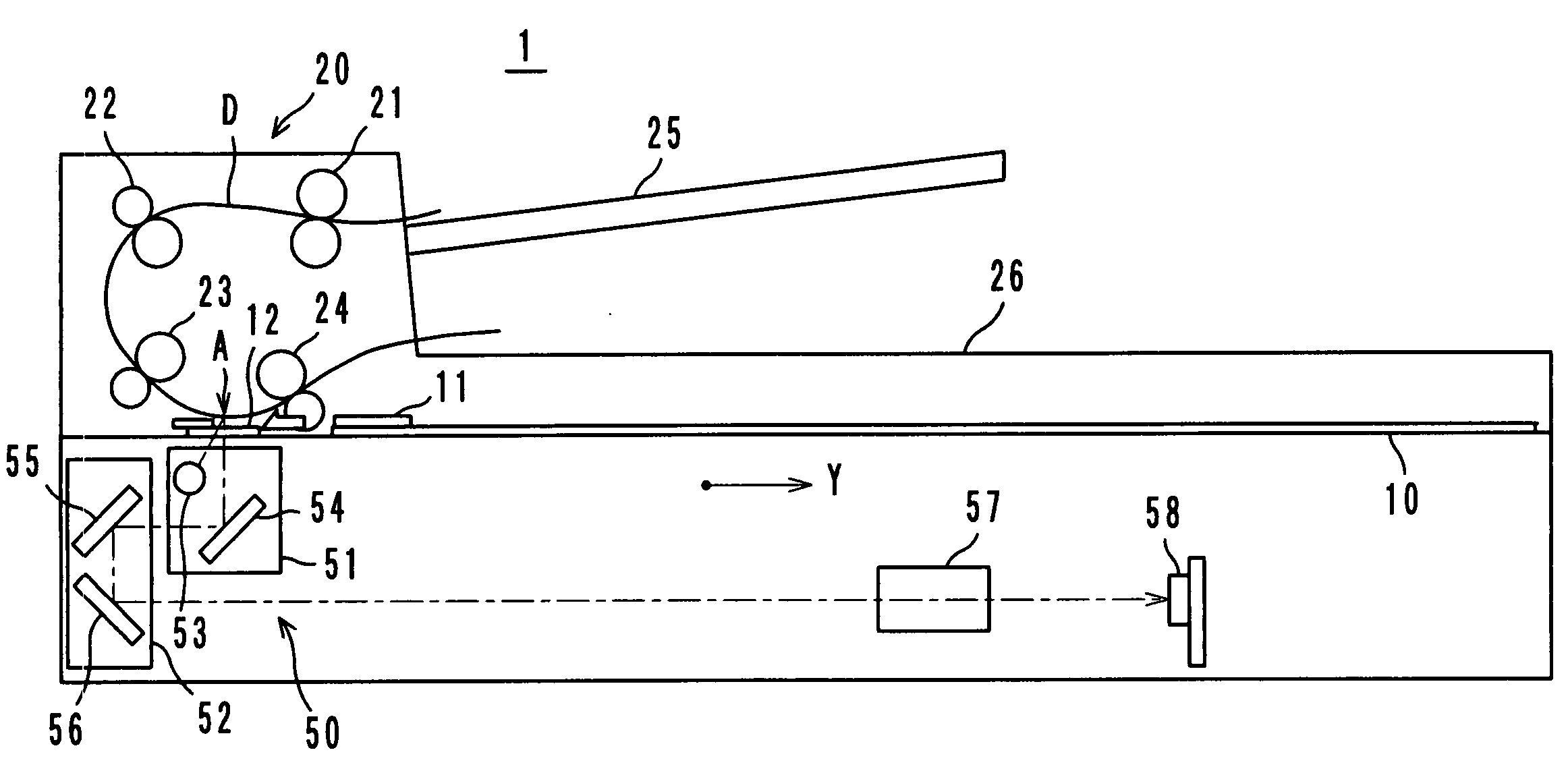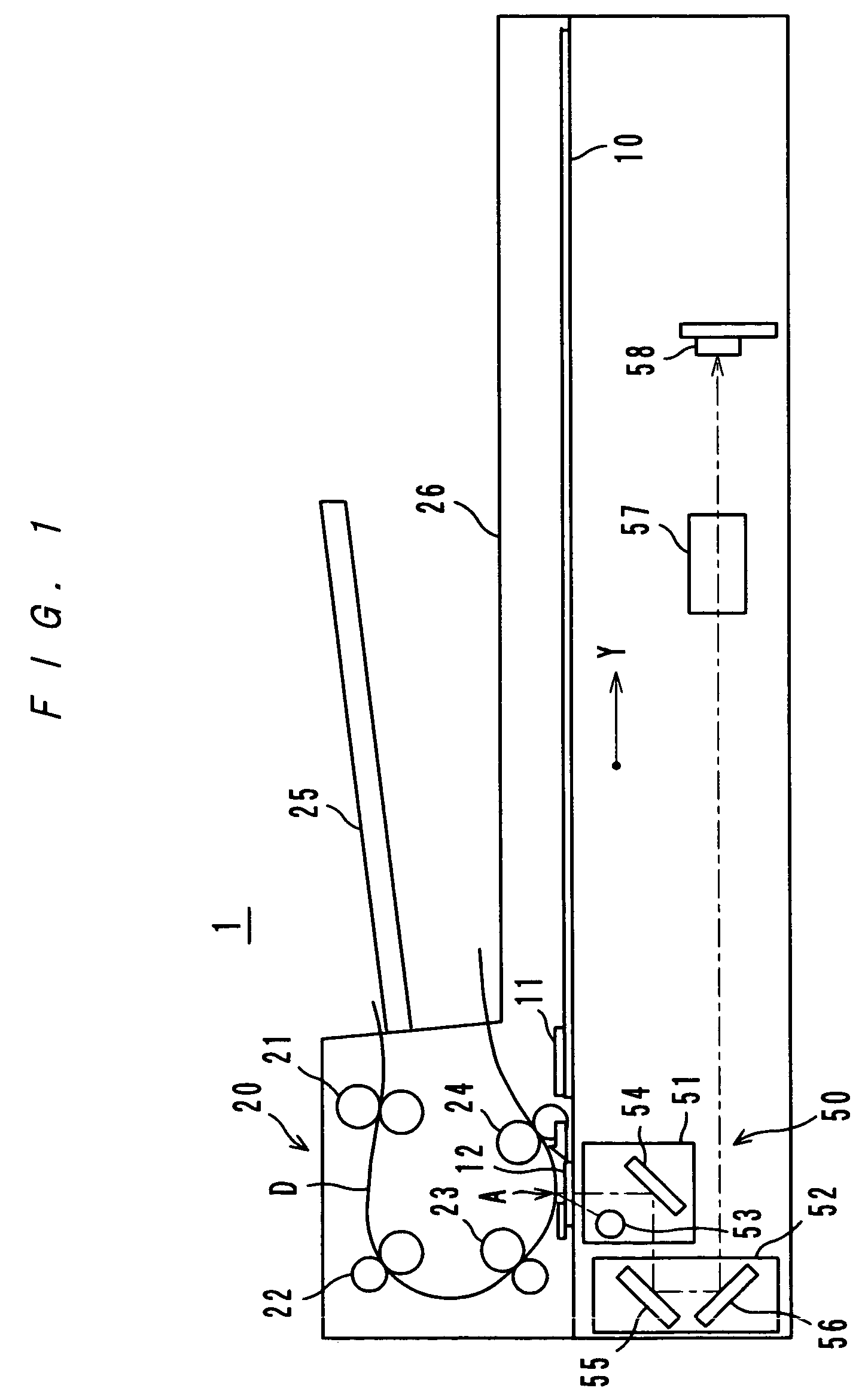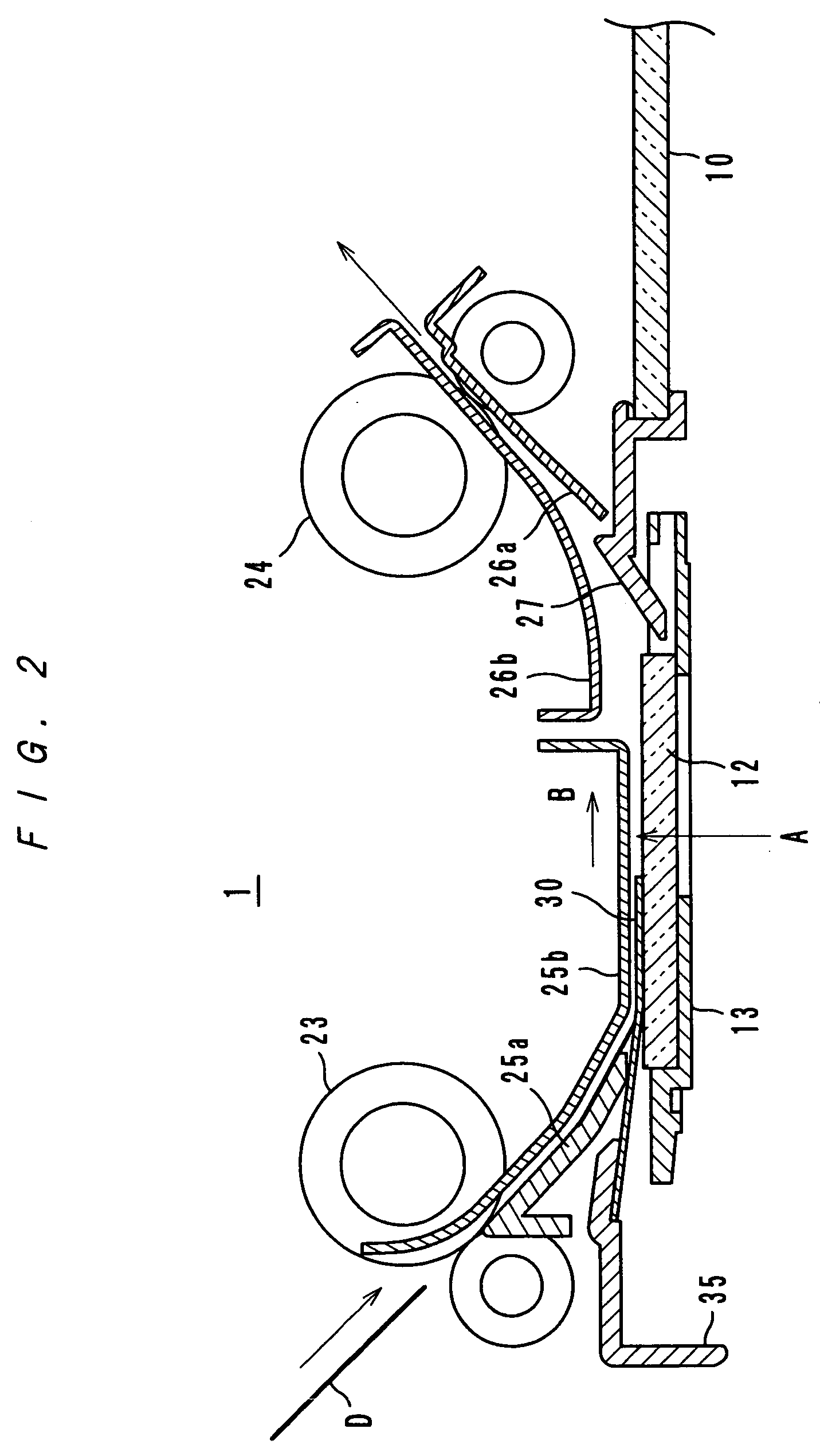Image reading apparatus
a technology of image reading and reading device, which is applied in the direction of electrical equipment, picture communication, etc., can solve the problems of floating foreign matter, image noise, image noise, etc., and achieve the effect of preventing noise stripes from appearing
- Summary
- Abstract
- Description
- Claims
- Application Information
AI Technical Summary
Benefits of technology
Problems solved by technology
Method used
Image
Examples
Embodiment Construction
[0041]Embodiments of an image reading apparatus according to the present invention are described with reference to the accompanying drawings. In the embodiments below, same parts and same members are referenced with same reference marks, and repeated descriptions are omitted.
Image Reading Apparatus; See FIGS. 1-6
[0042]FIG. 1 shows an image reading apparatus 1 according to an embodiment of the present invention. The image reading apparatus 1 adopts both a platen-set method wherein an image of a document (not shown) set on a platen glass 10 is read and a sheet-through method wherein an image of a document D fed by an automatic document feeder 20 is read, and an image reading optical system (a scanner) 50 is provided.
[0043]Image reading by the platen-set method is carried out as follows: a document set on the platen glass 10 is irradiated by a lamp 53, for example, a rare gas fluorescent lamp; light reflected by the document is further reflected by mirrors 54, 55 and 56, and then enter...
PUM
 Login to View More
Login to View More Abstract
Description
Claims
Application Information
 Login to View More
Login to View More - R&D
- Intellectual Property
- Life Sciences
- Materials
- Tech Scout
- Unparalleled Data Quality
- Higher Quality Content
- 60% Fewer Hallucinations
Browse by: Latest US Patents, China's latest patents, Technical Efficacy Thesaurus, Application Domain, Technology Topic, Popular Technical Reports.
© 2025 PatSnap. All rights reserved.Legal|Privacy policy|Modern Slavery Act Transparency Statement|Sitemap|About US| Contact US: help@patsnap.com



